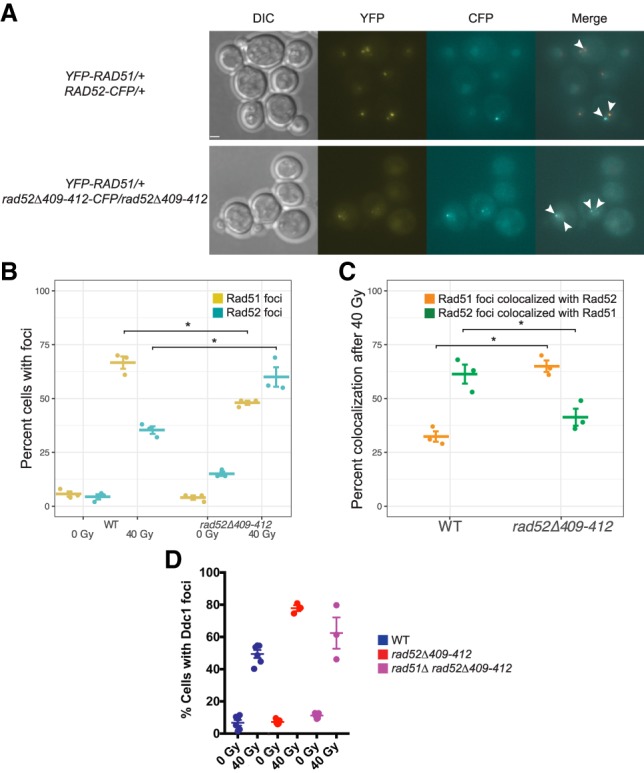Figure 5.

The Rad52Δ409–412 protein affects recombinase and checkpoint factor recruitment. (A) Images of either YFP-RAD51/+ RAD52-CFP/+ or YFP-RAD51/+ rad52Δ409–412-CFP/rad52Δ409–412 cells after treatment with 40 Gy of IR. Rad51 foci are significantly weaker in rad52Δ409–412 cells. Mean focus intensity ± SEM is 120,000 AU ± 17,000 AU in wild type (n = 68 foci) and 7600 AU ± 1100 AU in rad52Δ409–412-CFP/rad52Δ409–412 (n = 45 foci). P-value < 0.001, unpaired t-test. Colocalized Rad51 and Rad52 foci are marked with arrowheads. Bar, 1.7 µm. (B) The percentage of cells with Rad51 (yellow) or Rad52 (cyan) foci before and after irradiation in wild-type (left) and rad52Δ409–412-CFP/rad52Δ409–412 (right) cells. Each point represents a biological replicate with mean and SEM plotted. (C) The percentage of total Rad51 foci that colocalize with Rad52 foci (orange) or Rad52 foci that colocalize with Rad51 (green) in irradiated wild-type or rad52Δ409–412-CFP/rad52Δ409–412 cells, as in B. (D) Ddc1 focus counts, performed as in Figure 3C. Wild-type data are from Figure 3C. (*) P-values < 0.05, as calculated by unpaired t-test.
